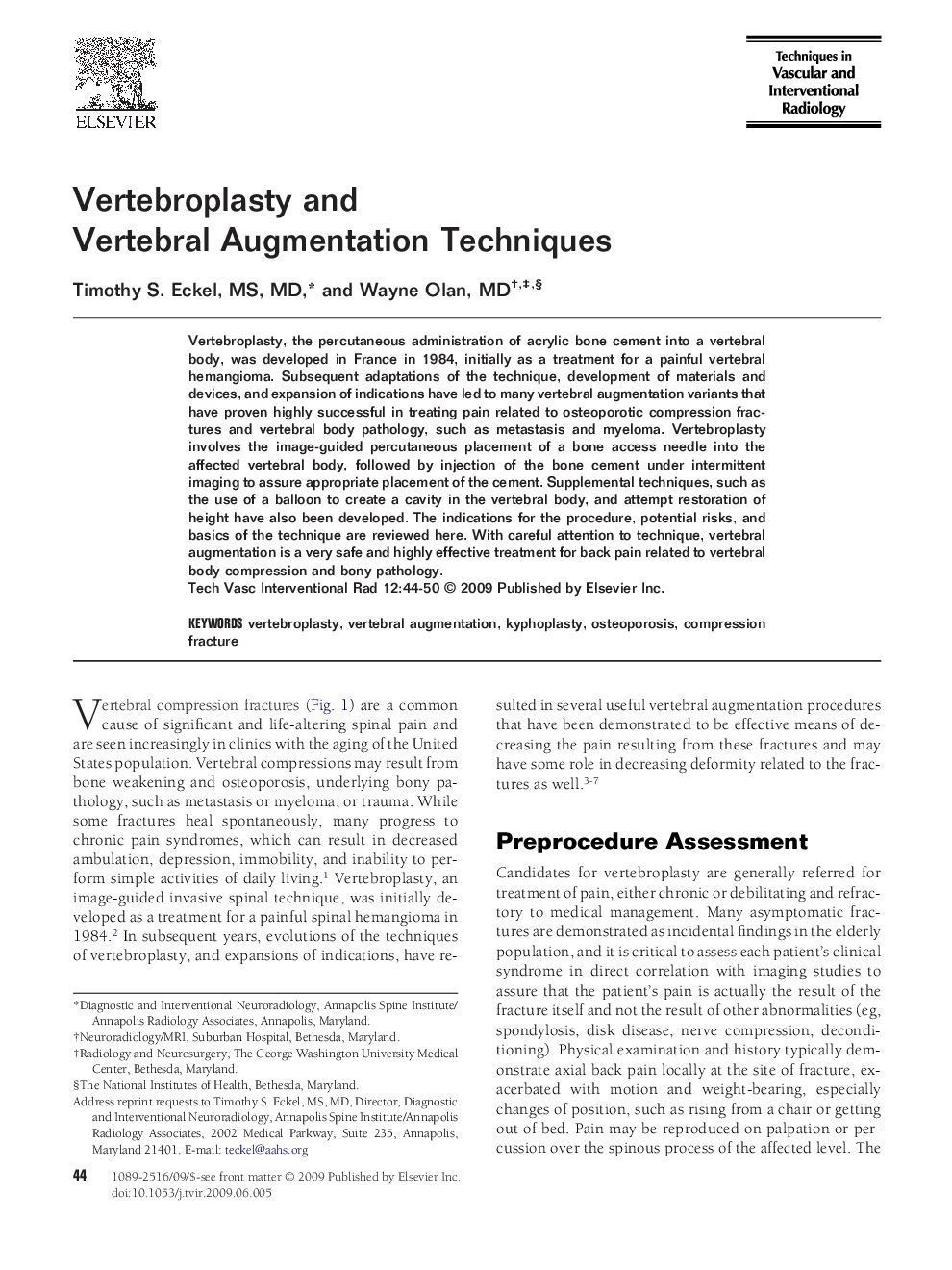| Article ID | Journal | Published Year | Pages | File Type |
|---|---|---|---|---|
| 4251917 | Techniques in Vascular and Interventional Radiology | 2009 | 7 Pages |
Vertebroplasty, the percutaneous administration of acrylic bone cement into a vertebral body, was developed in France in 1984, initially as a treatment for a painful vertebral hemangioma. Subsequent adaptations of the technique, development of materials and devices, and expansion of indications have led to many vertebral augmentation variants that have proven highly successful in treating pain related to osteoporotic compression fractures and vertebral body pathology, such as metastasis and myeloma. Vertebroplasty involves the image-guided percutaneous placement of a bone access needle into the affected vertebral body, followed by injection of the bone cement under intermittent imaging to assure appropriate placement of the cement. Supplemental techniques, such as the use of a balloon to create a cavity in the vertebral body, and attempt restoration of height have also been developed. The indications for the procedure, potential risks, and basics of the technique are reviewed here. With careful attention to technique, vertebral augmentation is a very safe and highly effective treatment for back pain related to vertebral body compression and bony pathology.
